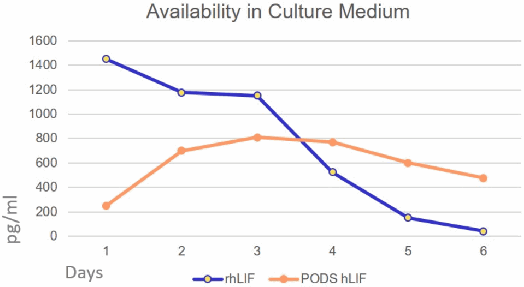PODS™ (POlyhedrin Delivery System) is a protein production technology which dramatically increases the stability of proteins. PODS production is based on a survival mechanism used by the Bombyx mori cytoplasmic polyhedrosis virus (BmCPV): in late stages of infection, crystalline cubes develop within insect cells. These crystals are typically one to five microns across and are formed from the polyhedrin protein expressed by BmCPV. As the crystals are formed, mature BmCPV virions specifically attach via a protein motif on the virion surface and become encased within the crystal. This protects the virus resulting in much greater durability with an extended window of opportunity for infection of a new host.
PODS technology leverages this stabilization strategy. Improved immobilization tags have been developed to faciltate the incorporation of essentially any protein into the crystal structure. PODS crystals are generated in cells in which the BmCPV polyhedrin protein and cargo protein (e.g. growth factor) are co-expressed under the control of the polyhedrin promoter. As the cubic PODS crystal is formed, the cargo protein becomes encased.

Cargo proteins are incorporated into PODS™ crystals when co-expressed with the polyhedrin protein.
In the presence of proteases which are present in sera or released by cultured cells, PODS slowly disintegrate releasing their cargo. The slow release characteristics allow PODS proteins to maintain >50% peak levels in cell culture after 5 days. In contrast, the activity of standard growth factor is completely abolished during this timeframe (see below). In animal models of bone repair, PODS growth factors have also demonstrated their therapeutic potential. For example, BMP-2 generates significantly better bone growth than standard BMP-2, and activity is retained for over 10 weeks.

The concentration (pg/ml) of a recombinant growth factor or a PODS™ growth factor in solution was measured using an ELISA assay over a period of 6 days. At the start of the experiment, on day 1, recombinant growth factor (rhLIF) was maximal but was completely depleted by day 6. In contrast, >50% of peak levels were still present for PODS LIF proteins on day 6.
To date, the technology has been used to generate PODS containing dozens of different growth factors and numerous other proteins including 17 vaccine candidates. Compared with standard growth factors, PODS growth factor have much higher stability in storage and an extended half-life in culture. For example, PODS LIF protein can be stored at 25˚C for several months without any changes in bioactivity.
Key Advantages of PODS™ Growth Factors
- Reduced frequency of cell culture media changes
- Stabilized growth factor concentrations during culture for more predictable cell behavior
- No denaturation or refolding of the protein during production resulting in 100% bioactivity
- May be attached to substrates for localized deposition within a culture system
- Development of physiologically relevant concentration gradients for patterning
- Minimal batch-to-batch variation
- Produced in insect cells for important post-translational modifications
- Animal-free production
- Long shelf life – no waste
- Stable at 4C - no need to freeze and aliquot
- Available in small, medium and large pack sizes
- Cost effective
